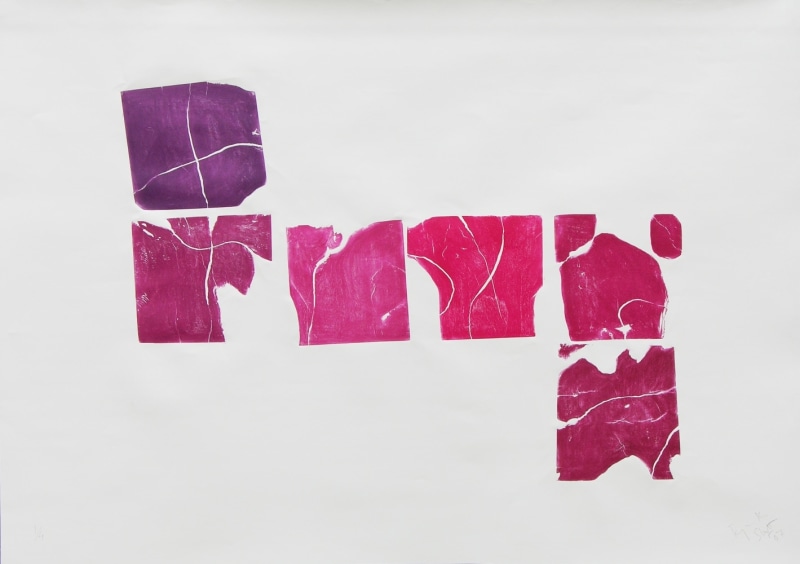
Ranjani Shettar's recent solo show, containing two sculptural installarions and four woodcut prints, dressed the mundane in the garb of the mysterious. In Touch Me Not, 2006-2007, creamy-colored wooden beads are attached to a snow-white wall; their carefully fashioned, lacquered spheres balance on silvery meral rods. like the bashful plant for which iris named, Shertar's beadwork seems acutely sensitive to the viewer: The beads form undulating lines on the wall that seem 10 meet and merge while casting tiny, shuddering, bubblelike shadows.
For the second installation, viewers meandered down a staircase into the gallery's dimly lit basement. Me, No, Not Me, Buy Me, Eat Me, Wear Me, Have Me, Me, No, Not Me, 2006-2007, lives up to its riddling ride. Thin strips of multicolored steel are woven together 10 create five basket-like forms, their squat shapes suggestive of both rusty machinery and crouching animals. The viewer is trapped and enveloped by grid-patterned shadows. The silhouettes of these pseudovessels are as fearsome as those of Touch Me Not are fetching.
Shettar's exhibition was called "Epiphanies," -a word the artist says expresses her feelings when method and material combine to produce the desired effect. Though she was born in Bangalore and is still based there, there is nothing obviously Indian about Shettar's work, and she has shown more extensively abroad (most recently, at the Biennale de Lyon 2007) than at home. But, appearances notwithstanding, India's rapid urbanization and the consequent erosion of rural traditions find their way into her art. Me, No, Not Me ... deals with consumption and production. The work was fashioned by hired laborers from the bodies of old cars in Bangalore's junkyards. Each steel strip retains the partially rusted color of the original vehicle-red, blue, green, slathered over with white metal paste- reflecting Bangalore's recycling industry, which is powered by low-wage laborers. India's transition from a rural 10 an industrial society, evident in Bangalore's construction boom, is evoked in the work's semi-organic, semi-industrial shapes. Touch Me Not is the plaintive cry of nature under threat. In the hand-painted woodcut River Dance, 2007, soft blue and golden streaks suggest partially evaporated smears of liquid. The aquatic allusions of the prints accord well with the environmental themes of the installations, though it is all 100 easy 10 bypass these delicate, smallscale works for the latter's shadowy seductions.
Shettar's ambiguous installations are unusual in the contemporary Indian art scene, where figuration reigns supreme, but they aren't without precedent. The Baroda-based Valsan Kollcri's site-specific installations are similarly preoccupied with the ways in which the rural order is yielding to industrialization. Like Shettar's installations, Kolleri's copper-wire meshes play games with light and shadow, though they often operate with a more muted palette
-Zehra Jumabhoy